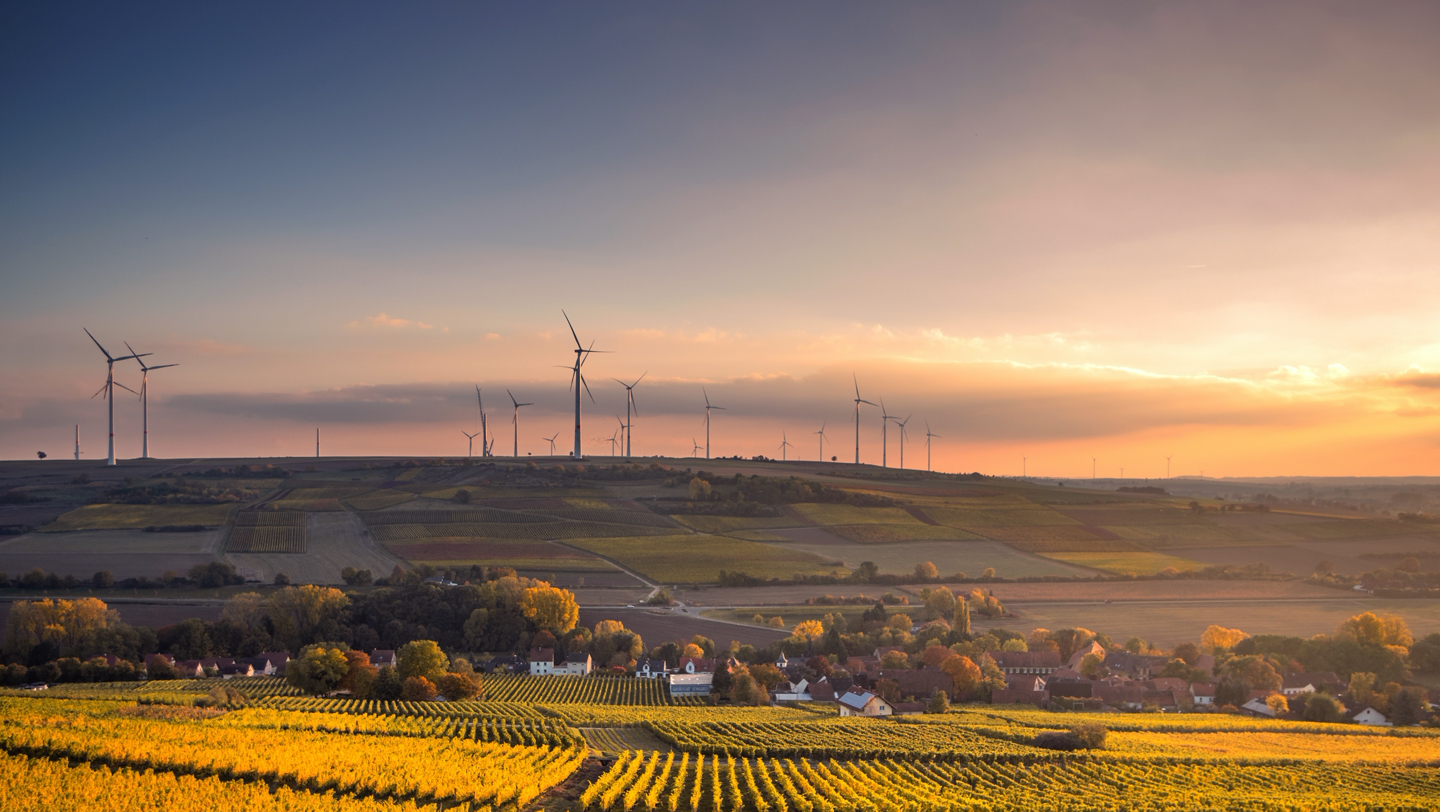This is my story: An ex-fund manager who strongly believed that investing in renewable energy could make us more sustainable. I’m now of the view that it helps, but that renewable energy is a lonely drop in the ocean of sustainability, and can’t solve this wicked problem on its own - for a number of reasons.
I’d originally set out to investigate the ways in which renewable energy is facing up to the existential crisis of climate change and whether the renewable energy industry was facing its own existential issues. Along the way, I was struck by the realisation that the only way I could envisage real change was by mobilising each and every one of us to help, using our collective actions to change the system from the bottom up. The solution really lies with us…
My path to enlightenment
I’ve got to admit, for pretty much my whole career I’ve been someone who has loved my job, doing something that actually felt meaningful to me. Never a zero-sum game. I’ve invested, generally pension fund money, in tangible things you can actually touch and feel: everything from the M40 road to Wythenshawe Hospital to Drumglass High School in Northern Ireland.
I dedicated the last decade of my career to focus solely on investing in and developing renewable energy and sustainability projects around the UK and Europe. Over that time, I invested in many of the different ways we have tried to use infrastructure to change the impact of our energy systems. These included waste-to-energy projects, windfarms, and trying to fund a nappy-recycling plant of all things!
The formula
Renewable energy projects absolutely make a difference. They’ve averted millions of cars’ worth of greenhouse gas (GHG) emissions and they’ve enabled us to contemplate a future without fossil fuel energy generation. But the stark reality is that this only really materialised because Germany single-handedly subsidised the industry in its infancy to the point where project costs became somewhat affordable. Since then, countries like the UK have been at the forefront of subsidising renewable energy projects, which has allowed them to proliferate at the rate we see today. Scotland even has days where it generates all its power from renewable sources. An amazing achievement.
But does it work?
These subsidies worked by providing a certain price for all power produced from these renewable energy projects. The subsidies enabled the projects to mobilise billions of dollars to build them from low-cost sources such as banks and pension funds. With renewable energy projects now reaching cost parity with fossil fuel sources (or better), governments around the world have cut back or removed any subsidies for future renewable energy projects. In principle, this may sound reasonable, but the fundamental issue with renewable energy projects is that wind and sun are not 24/7/365 sources of energy. Making all renewable projects intermittent energy generators. Unfortunately, this doesn’t fit our incessant demand for energy in a modern world.
To make matters worse, the electrons generated from renewable sources are sold into wholesale power markets, where they are treated the same as the electrons produced by fossil fuel generators. Despite the considerably higher carbon and societal costs of the power produced from fossil fuels, governments have not applied an appropriately priced carbon tax to fossil fuel-sourced energy. In fact, the UK provides subsidies to the oil industry that are worth ten-times that provided to the renewable energy industry! Go figure. But that’s an entirely different story for another time…
These issues of intermittency could be solved by batteries or other large energy stores, but the technology isn’t at the right cost yet. Even assuming intermittency is sorted, renewable energy projects still have the issue of selling their energy in the wholesale markets, where the price variability is wild and there is no premium to reflect the ‘clean’ electrons. Some days in the UK it might swing from a value where you need to pay to sell power (occurs where there is more power being produced than the whole transmission network can cope with so it wants generators to turn off) to having to buy it for over £2,000/MWh. Yes, you could have to pay to sell power on days when it is really windy and sunny!
Chicken or Egg?
Surely technology has the answer to fix these issues. I spent a great deal of time over the last two years digging far and wide, trying to find these great technologies that can help the energy sector. What I found did give me some hope, but there was no cohesive approach bringing these awesome new technologies together - only solutions to very discrete problems.
As well as lacking cohesiveness, the challenge today with any new technologies that are seeking an application in the renewables or sustainability sectors involving physical assets (i.e. multi-million-dollar projects), is that these technologies need to be ‘proven’ in order to secure investment. But how can a genuinely new and innovative technology be ‘proven’?
In the past, this has been funded by visionary investors or large utilities or other conglomerates, but these investors have become wary given a number of high-profile technology failures. For example, Faraday Grid was an innovative technology company that required very expensive new infrastructure to be built to use their technology - they went bust recently when it became apparent that investors simply weren’t going to fund the infrastructure required with their new technology. Furthermore, investors have also realised the pricing issues mentioned above for any subsidy-free projects.
The final challenge with any technologies that require new infrastructure to utilise them is that the permitting processes needed are often difficult to navigate and take years to come to fruition (often 10+ years from start to finish). To top it all off - from my own experience as an investor in projects or companies, whilst I had some level of control, I still couldn’t make a company do things I requested/suggested.
...the chicken
This all got me to the realisation that funding any new renewable energy projects would be extremely difficult, may not reflect the best new technologies, and ultimately won’t fix the problem in time. Which left me thinking—how else could I make sustainable change happen without relying on large investments in physical infrastructure?
In my personal life, I had done everything I could think of - switching to a renewable energy utility supplier, eating less red meat, minimising food waste, and using LED lightbulbs and a smart thermostat in my home. I really wanted to do more but couldn’t see an easy way. There didn’t seem to be anything that addressed the individual. Governments would tell us about climate change problems and assure us that they’re helping by funding some offshore wind projects, but not tell me how I could make a difference at the personal level.
...the egg
It was about this point that I was speaking to my Suste co-founder, Cuong, about his idea to use intermittent fasting to kick start personal sustainability. Funnily enough, I was the one who introduced Cuong to fasting, but despite doing it for years for the health benefits, I had never considered the sustainability link. At first, I thought the link was a little tenuous, but after spending some time researching the matter it became apparent that the single biggest thing we can do individually to change the impact we have from the food we eat is to consume less generally, especially red meat. Given fasting has been proven to reduce daily calorie consumption by about 20%, it made perfect sense to link fasting to sustainability.
When fasting is combined with a plant-rich diet, research has found that it can prevent over 8 million deaths and 129 million life-years saved per year (Springmann, 2016). The potential total economic benefit of which could be as high as $31 trillion per YEAR.
Voila!
Then came the lightbulb moment: why not find ways to change our behaviour at the individual level to get the system to change from the bottom up. And if we could also create a ubiquitous measure of our personal sustainability, that would then ‘keep us honest’, so to speak. In the same way we care about our reputation, I thought we could also care about our ‘sustainability score’. Hence the Suste Score.
In my opinion, all of the existing tools used by governments have not really been able to change how we behave from a sustainability perspective. Ultimately, I couldn’t see things really changing without a dramatic reduction in demand for unsustainable goods and services. The power of the consumer dollar is huge and has only just begun to be flexed for good.
Individual change driving systemic Change
A change led by the consumer with a Suste Score would then also create a virtuous sustainability circle: as the products consumers buy would impact their score, this would drive companies to constantly improve their sustainability as consumers continue to seek the most sustainable products.
It became clear that the only way this sort of change could happen was for there to be global up-take of sustainable behavioural changes – and that this would only happen in the digital age we live in with a truly scalable digital platform. Waiting for governments to mobilise this sort of change felt futile. I no longer had faith that investing in individual renewable energy and sustainability infrastructure assets would get us there fast enough. The only choice I felt I had was to make Suste happen.
The 'full-circle’ moment for me was realising the impact of consumer-led demand for more sustainable products. For example, in the area of renewable energy, consumers leading the drive to sustainability could solve some of the issues of how new renewable energy infrastructure is funded. The more individuals actively sought out renewable energy sources for their home, the more utilities companies would need new renewable energy projects. Many developed countries only have enough renewable energy infrastructure to supply about 25%-50% of their populations. They also have virtually no ability to provide renewable heat sources. The only real solution for heat is from anaerobic digestion plants, which produce gas that can be used as a replacement for fossil gas. With a higher demand for renewables projects, the utilities would be prepared to pay a premium for power generated from renewable sources vs fossil fuel sources, bridging the price issues I discussed earlier. It would probably make permitting easier as well, since government agencies running approvals would see that people are demanding these projects.
All in all, I could see that if we could get systemic change to come from the consumer demand level, an entirely virtuous circle could be created.
The Suste effect
It makes perfect sense to me that an entirely virtuous circle of systemic change can only be achieved with the major impetus coming from consumer demand.
Food then became the natural starting place for Suste to focus on, given we had already found that fasting was able to physiologically change people to consume food in a healthier way. By factoring in further health science on what to eat, we felt that the Suste approach would not only make decisions that are better for the planet but a lot better for the individual. The science showed that our dietary recommendations could bring about improvements in cell regeneration and mental capacity, and ultimately had the potential to improve quality of life and lifespans for people of all ages. Importantly, we feel that Suste can make it all achievable. Making it easy for everyone to feel like they’re doing something for themselves and the planet.
Once all of this had become clear to me, I left my job and decided Suste was the only way to change things for good.
My mission now, and that of Suste, is simple: empower individual behavioural change for sustainable living.
Encore…..
I always get asked how I got up to speed on this area of fasting and its link to sustainability. Well here are a few of the articles which really helped me, and there are hundreds more if you’re interested…
Marco Springmann, et. al. Analysis and valuation of the health and climate change co-benefits of dietary change. PNAS April 12, 2016 113 (15) 4146-4151; first published March 21, 2016 Link
Gill S & Panda S. A smartphone app reveals erratic diurnal eating patterns in humans that can be modulated for health benefits. Cell Metab. 2015; 22: 789-798. Full Text
Food Forum et al, ‘Sustainable diets: Food for healthy people and a healthy planet: workshop summary’, National Academy of Sciences. ISBN 978-0-309-29667-0 | DOI 10.17226/18578
“One change can make diet more planet friendly”, Global Warming Focus, 24 June 2019, p. 254. Gale Academic Onefile. Gale Document Number: GALE|A590295607
Rebecca J Frey, ‘Intermmitent fasting’ The Gale Encyclopedia of Diets: A guide to health and nutrition, Vol.1, 2nd edition, 2013, Gale Cengage
Longo, Valter & Mattson, Mark. (2014). Fasting: Molecular Mechanisms and Clinical Applications. Cell metabolism. 19. 10.1016/j.cmet.2013.12.008. Abstract
Valter & Mattson’s 2014 review paper summarised key research findings on the molecular mechanisms of fasting and postulated how it could be applied to combat many diseases such as metabolic syndrome, obesity, cancer, Alzhemer’s, Parkinson’s, and had benefits of fat loss, anti-aging, anti-inflammatory, increasing lifespan, improving cognitive function.
Hargrave, S. et al. The outward spiral: a vicious cycle model of obesity and cognitive dysfunction. Current Opinion in Behavioral Sciences. Volume 9, June 2016, Pages 40-46. Full Text
Furmli, S. et al. Therapeutic use of intermittent fasting for people with type 2 diabetes as an alternative to insulin. BMJ Case Rep. Published online 2018 Oct 9. Case Study
Fung, J., & Noakes, T. (2016). The obesity code: unlocking the secrets of weight loss. Vancouver: Greystone Books.
"Scientifically-designed fasting diet lowers risks for major diseases." Health & Medicine Week, 3 Mar. 2017, p. 222. Gale Academic Onefile










